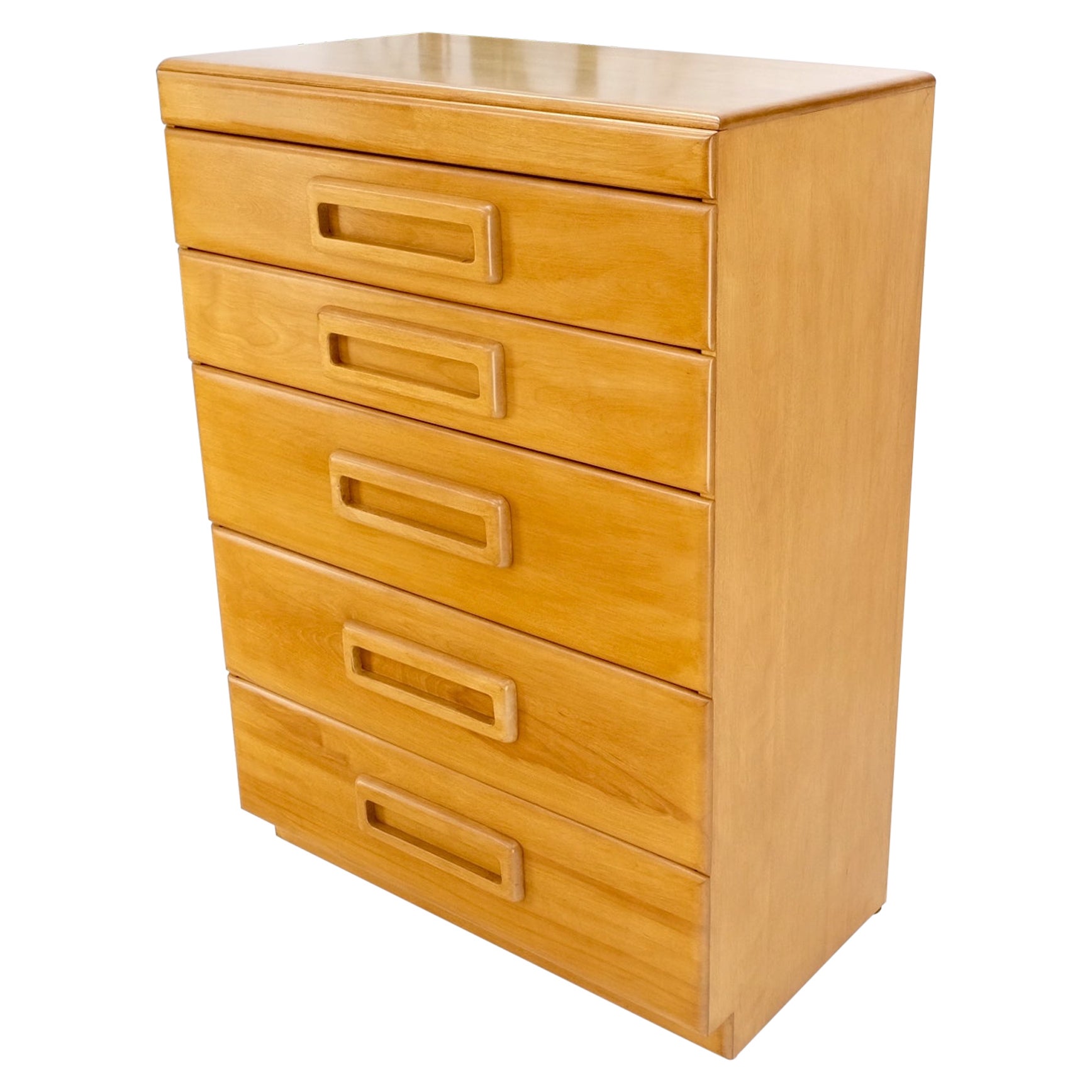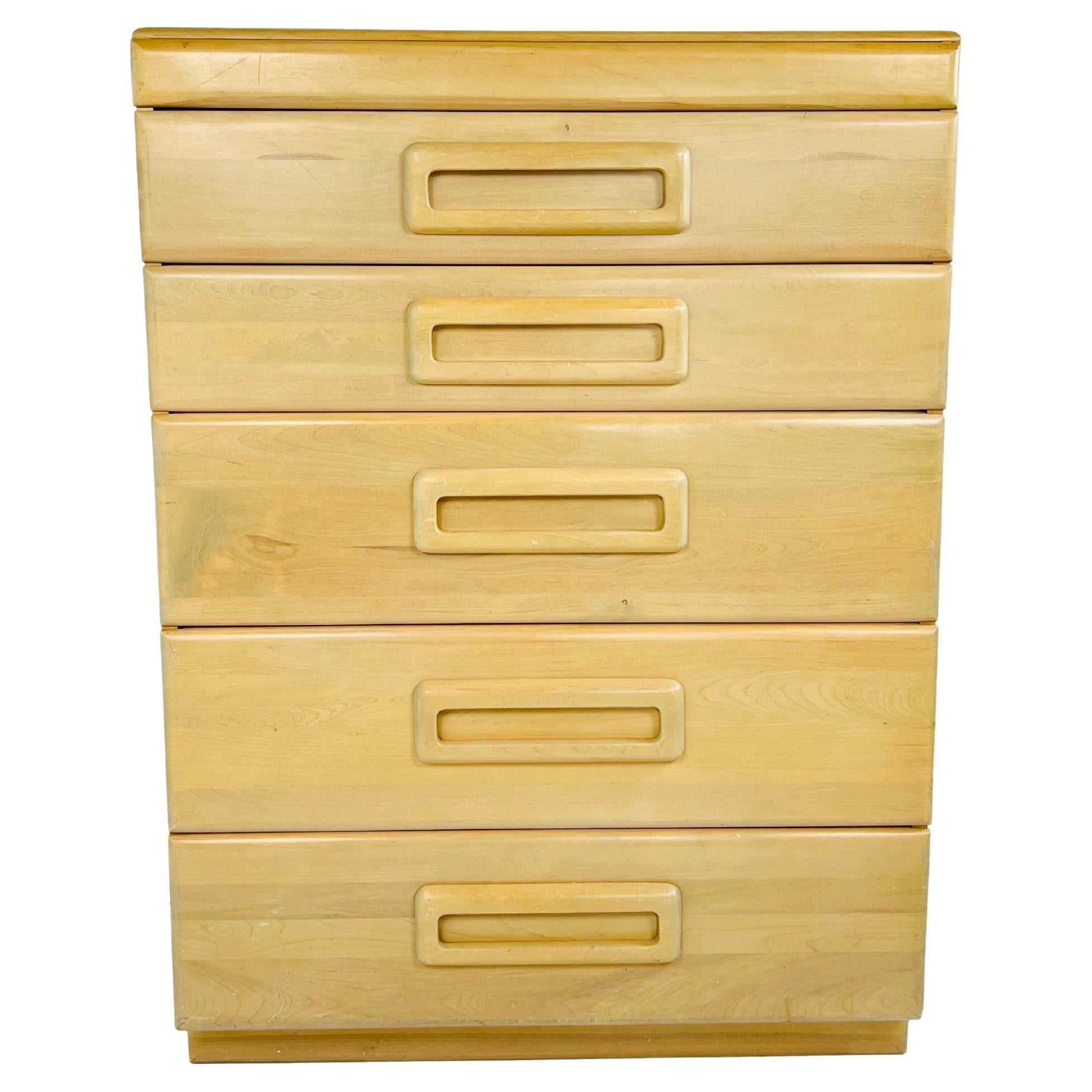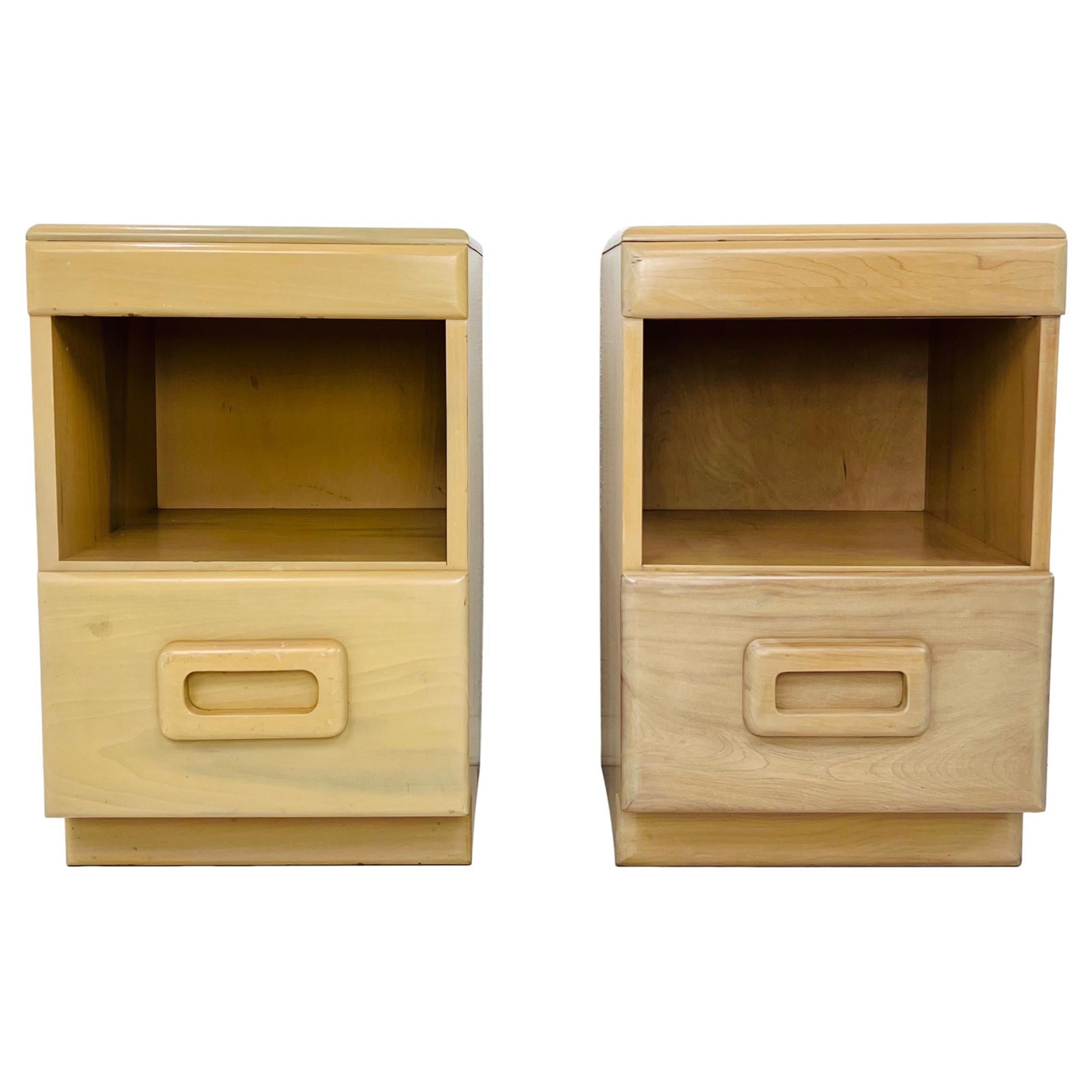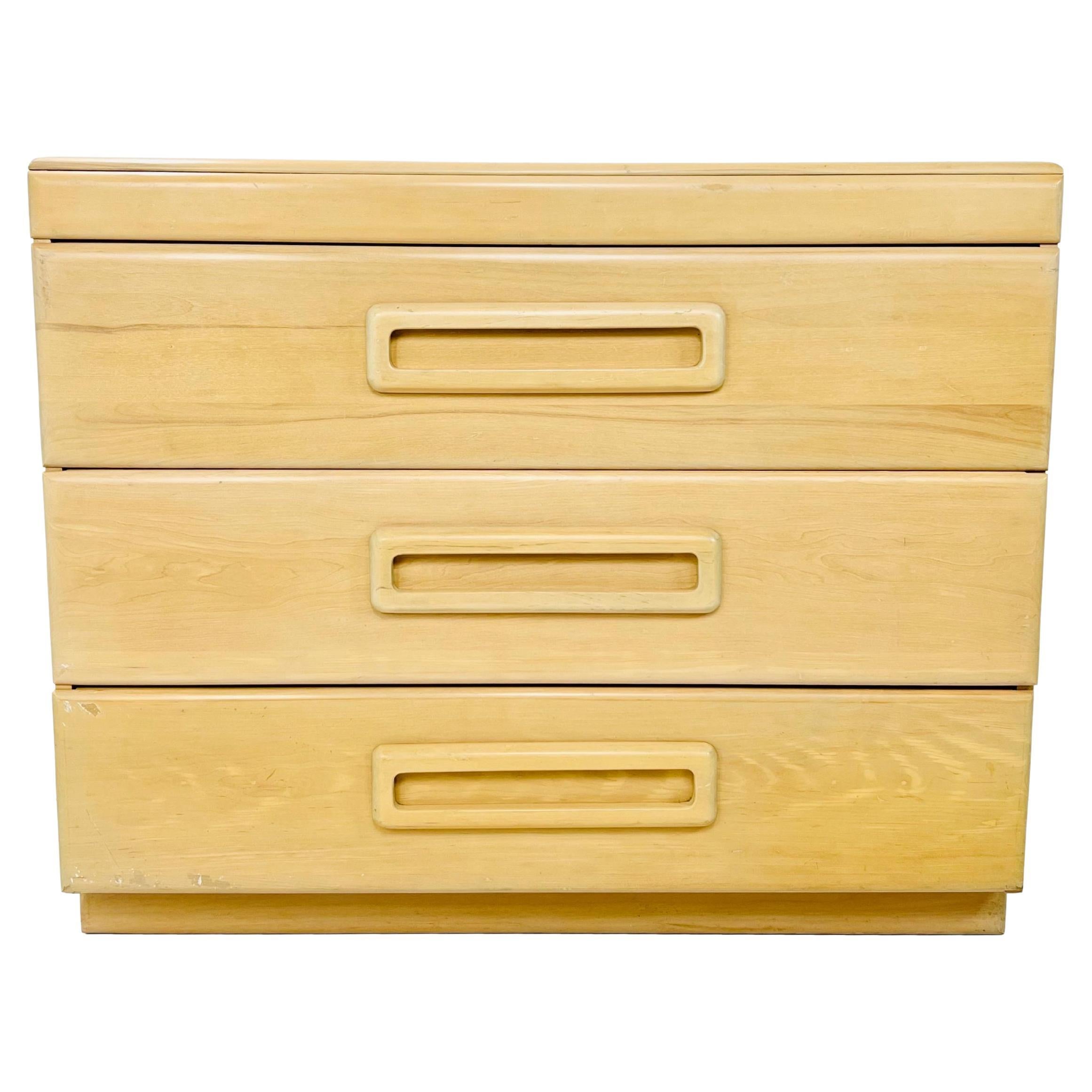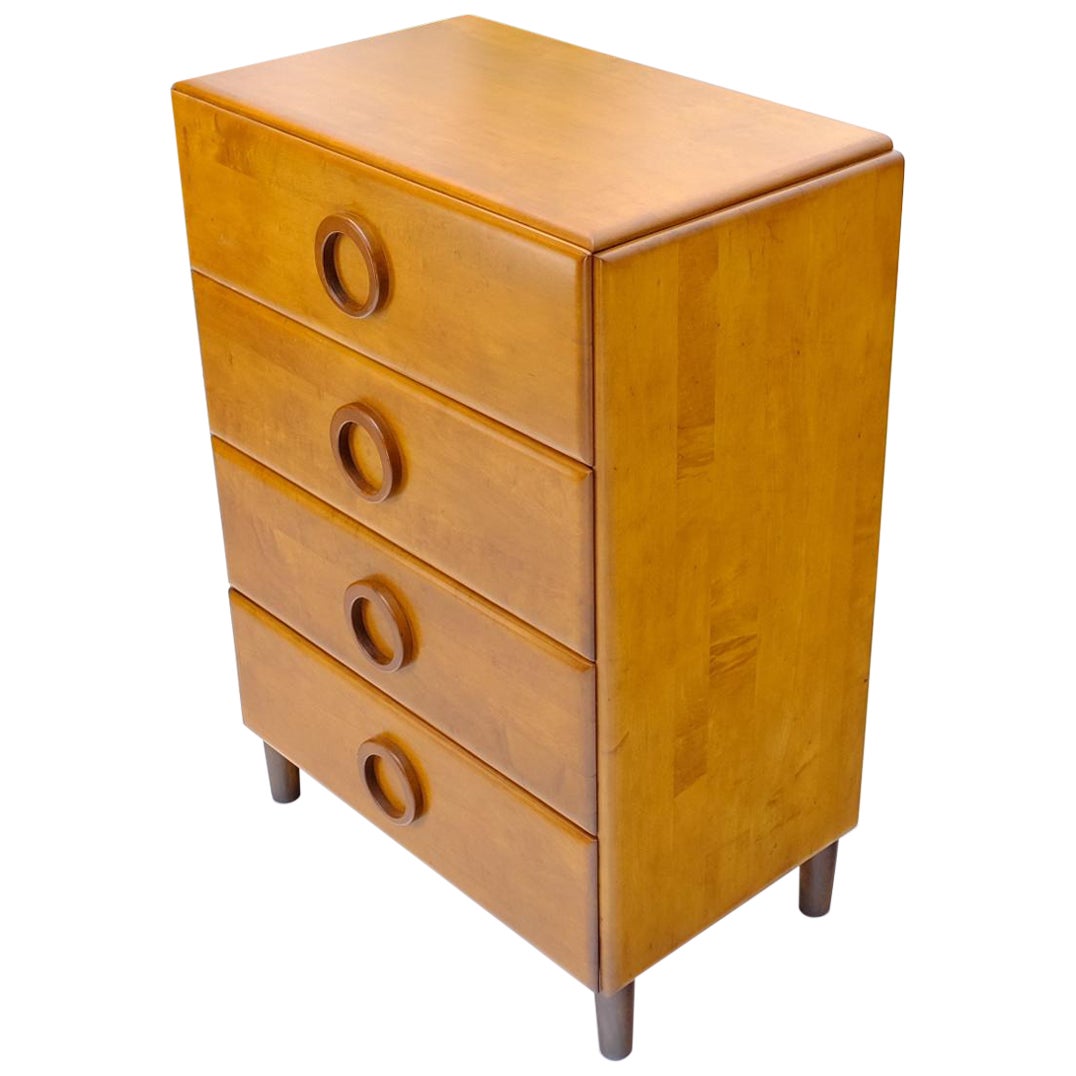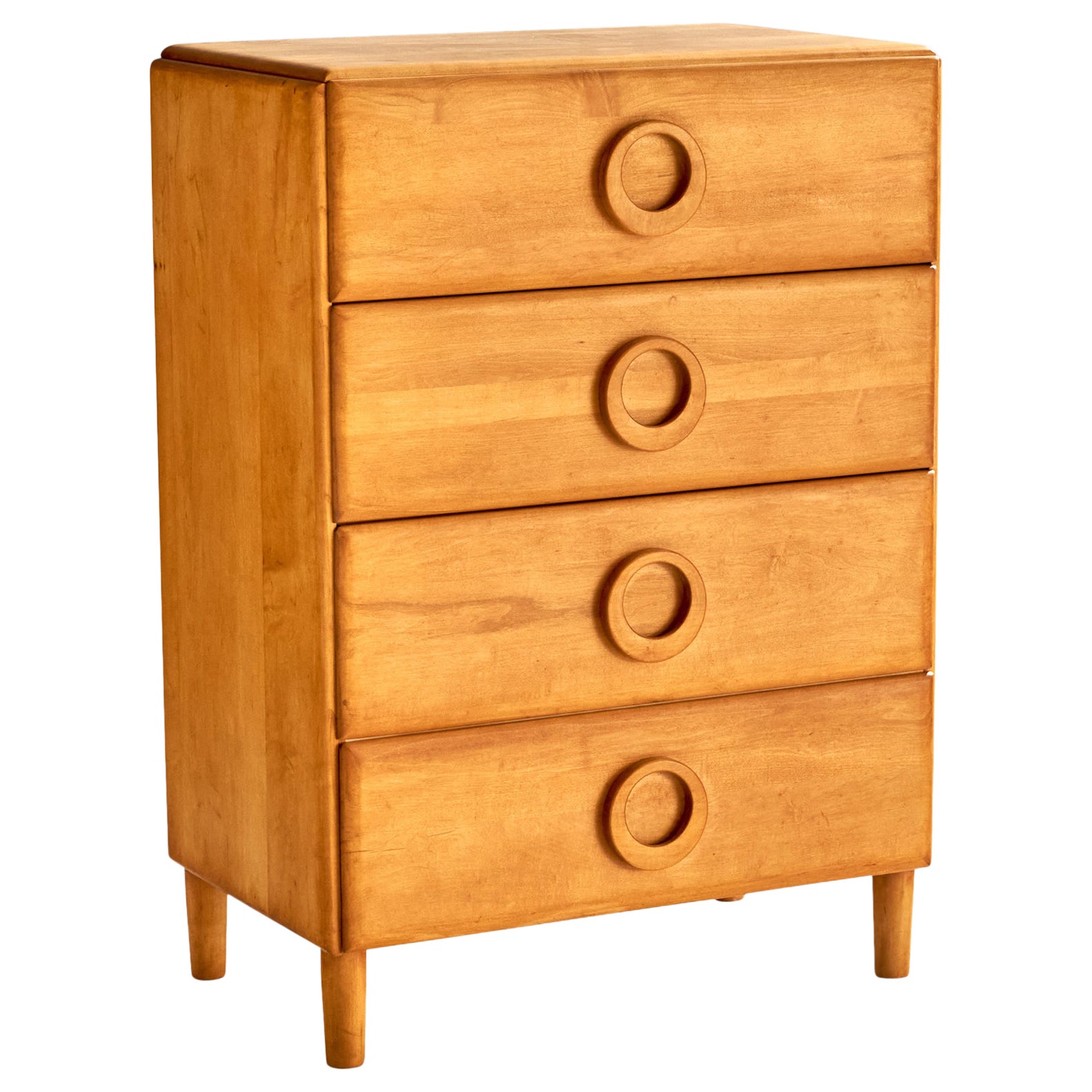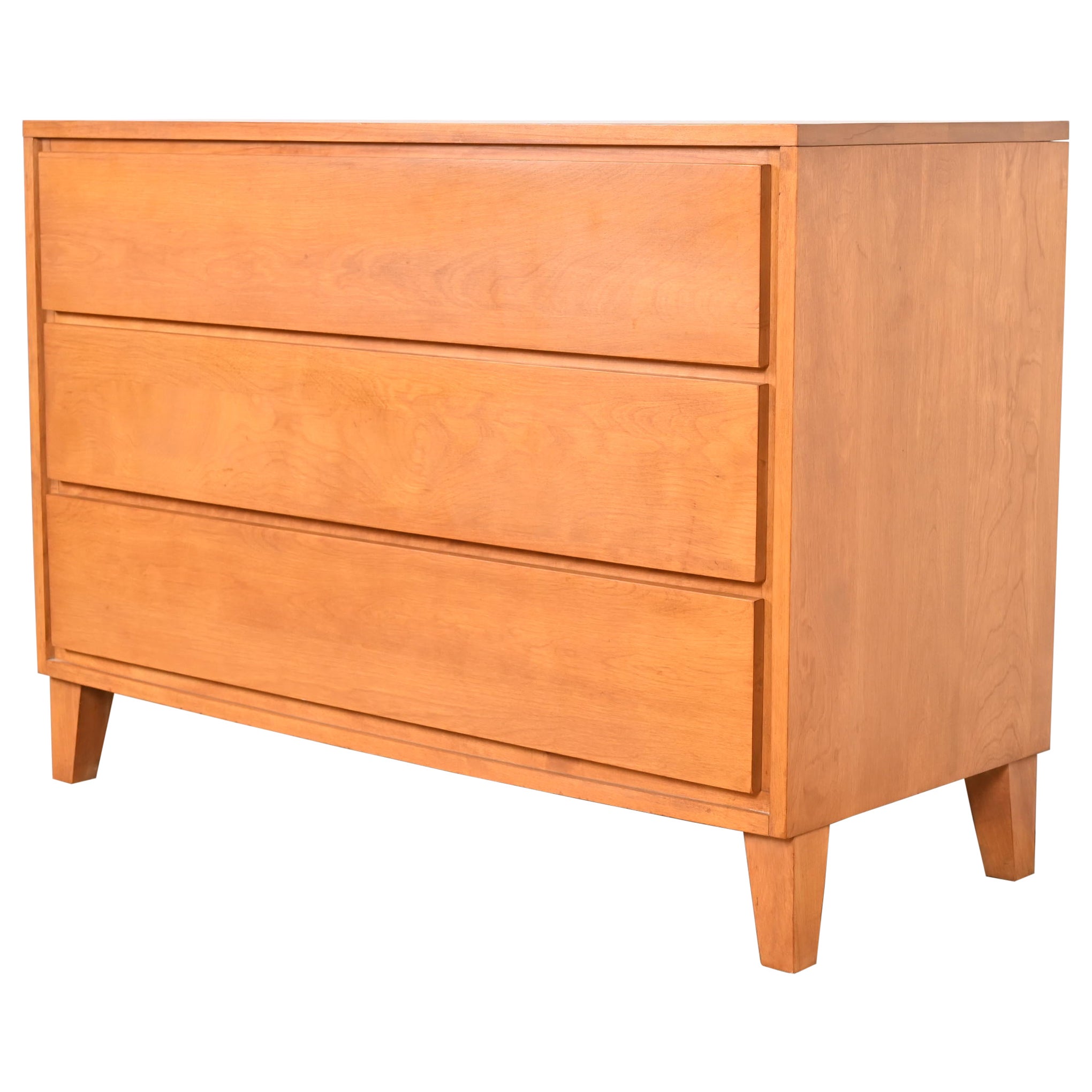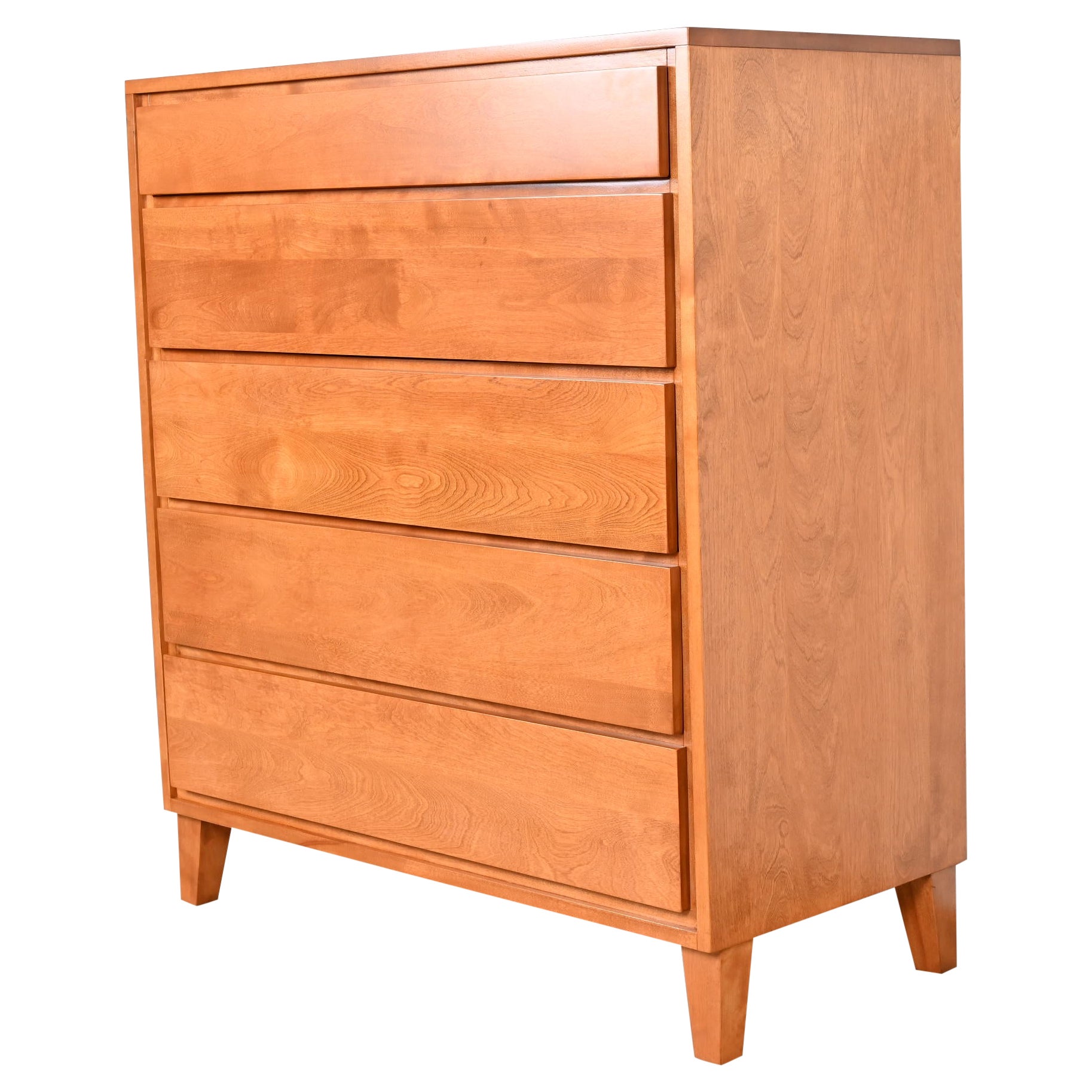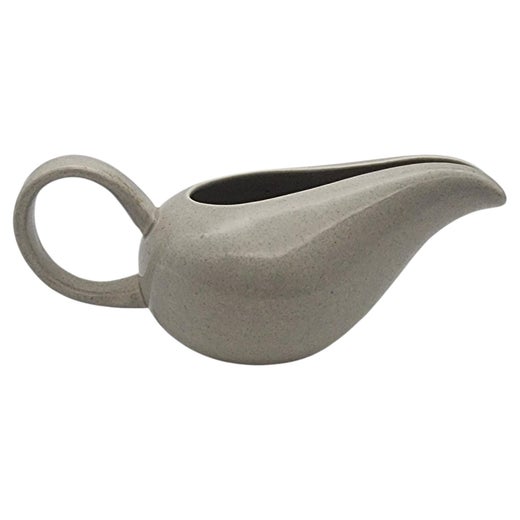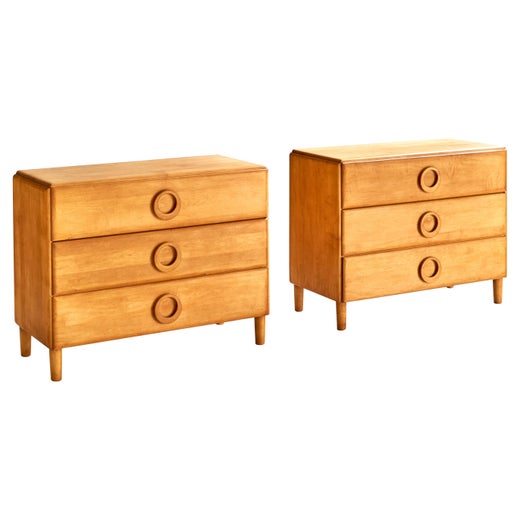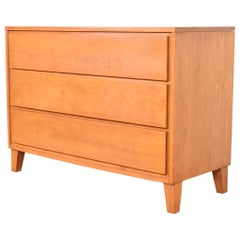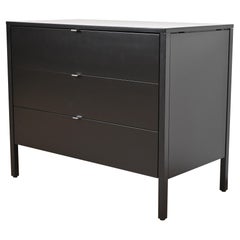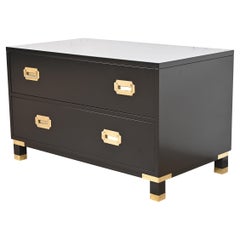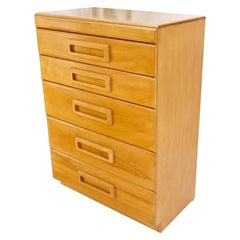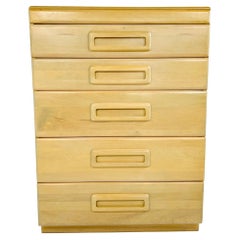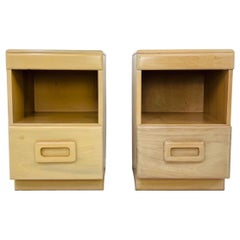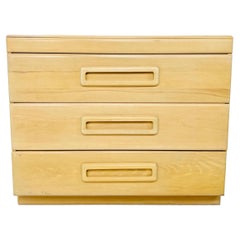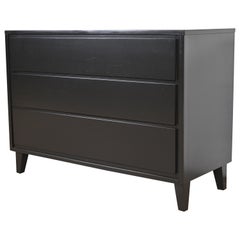
Russel Wright for Conant Ball American Modern Black Lacquered Chest of Drawers
View Similar Items
Russel Wright for Conant Ball American Modern Black Lacquered Chest of Drawers
About the Item
- Creator:Russel Wright (Designer),Conant Ball (Manufacturer)
- Dimensions:Height: 30.25 in (76.84 cm)Width: 42.38 in (107.65 cm)Depth: 18 in (45.72 cm)
- Style:Mid-Century Modern (Of the Period)
- Materials and Techniques:
- Place of Origin:
- Period:
- Date of Manufacture:1950s
- Condition:Refinished. Professionally refinished. Excellent condition.
- Seller Location:South Bend, IN
- Reference Number:Seller: 92431stDibs: LU2745331666542
Russel Wright
While industrial designer Russell Wright may be known to modern furniture enthusiasts for his streamlined end tables, dining chairs and other pieces, he is universally revered for a line of tableware he created called American Modern. Efficient, practical, and striking in their elegant forms and warm colors, the American Modern ceramic pieces, which included bowls, pitchers, dishes, and other items, became the best-selling dinnerware of all time. Today, vintage Russell Wright American Modern tableware is an evergreen favorite of art collectors and interior designers alike.
Born in 1904 in Ohio, Wright was surrounded by inspiration for the furniture he would one day design. He was raised in a Quaker household and grew up with the spare, meticulously handcrafted furniture for which the Quakers are known. As a young man, he studied art and sculpture at the Art Academy of Cincinnati and the Art Students League of New York, going on to study law at Princeton University in New Jersey. But Wright loved the arts and abandoned his pursuit of a law degree to create stage sets in Princeton and Paris alongside fellow noted designer Norman Bel Geddes.
In 1927, Wright married artist and sculptor Mary Einstein. Together, they moved to New York City, where Wright began to create sculptures. Mary convinced him to create metal bookends from his sculptures, and later, when he began to craft bar accessories from chrome, he turned to aluminum, a much cheaper material for the purposes of mass production (his barware was eventually included in the "Machine Art" show at the Museum of Modern Art in 1934, which was curated by Philip Johnson).
Mary worked on marketing Russell's products, successfully proposing everyday uses for Wright's beautifully designed housewares. She is said to have been a pioneer in the world of lifestyle marketing, coining the terms "American Modern" and "blonde" to describe the charming, light-colored maple furniture he created for Conant Ball, which was known at the time for its reproductions of American Colonial furniture.
While Wright had created some Art Deco furnishings for Heywood-Wakefield, it was this group of bedroom furniture for Conant Ball that got its name, American Modern, from Mary. Under her guidance, Wright's attractive, functional designs for the home gained renown, leading to commissions by prestigious companies like the Steubenville Pottery Company.
In 1935, Wright formed Russell Wright Associates with Irving Richards, an entrepreneur who had worked with Lightolier and would later establish Raymor. In collaboration with Richards, Wright debuted the first line of American Modern dinnerware in 1939, which was initially produced by Russell Wright Associates and then manufactured by Steubenville for two decades. The line sold over 200 million pieces during its 20 years of production. In 1955, Wright was selected by the U.S. State Department to research handicraft industries in Southeast Asia, a trip that influenced his later designs.
Throughout his life, Wright continued to design furniture and housewares, with the works' signature earth tones, curved forms, and clean silhouettes of his floor lamps, lounge chairs, and serveware remaining popular staples in American households. In his later years, he focused on designing and building his home, Manitoga, and working with the National Parks Service to develop the "Summer in the Parks" program.
Upon Wright's death in 1974, Manitoga was given to the Nature Conservancy. It was declared a National Historic Landmark in 2006 and today houses the Russell & Mary Wright Design Gallery, where many of Wright's works stand on permanent display. In 2011, stamps from the U.S. Postal Service featured Wright's image as one of the United States' twelve most influential industrial designers.
Find vintage Russel Wright lighting, seating, tables, serveware, ceramics and glass on 1stDibs.
Conant Ball
While the Conant Ball Company was initially known for its reproductions of period furniture in the Colonial style, the Massachusetts manufacturer eventually garnered national recognition as a leader in the production of solid rock maple dressers, tables and other pieces as well as for its popular modernist collections such as its large Sierra line designed by Colman Zola and its American Modern collection created by Russell Wright.
In the 1800s, the small town of Gardner, Massachusetts, saw a boom in start-up furniture factories. There was Westminster transplant Nichols and Stone, Standard Chair of Gardner Inc. — a maker of American Craftsman-style furnishings — Heywood-Wakefield, which moved into the manufacture of furniture with steam-bent wood frames and cane or wicker seating, and later, what was once the largest chair in the world was built in the city to attract tourists and to sell …chairs.
Conant Ball’s first product was its chairs — there were inviting chairs with woven cane seats and the company later earned acclaim for its Windsor designs. But before it got its name in 1909, there was a chair shop called Jackson & Greenwood. Abner and Leander White purchased the modest-sized business and renamed it A. White and Co. John Conant and his brother Charles joined later and it eventually operated under the name Conant Brothers and Co. Later, the firm’s name changed again with the addition of Carlos Ball, who helmed the company’s Boston location. Between Conant’s and Ball’s passings in 1891 and 1909, Charles Brooks and a succession of family members took the company into the 20th century as Conant Ball Co.
Conant Ball’s comely mid-century modern furniture — its low-profile lounge chairs, sleek tables and more — owe to partnerships with designers such as Leslie Diamond and Russel Wright.
Diamond and Wright created a variety of solid wood furniture including dining room chairs, side tables and dressers. The former created a line called ModernMates that featured solid birch office chairs, nightstands and dining chairs with curved spindle backs, while Wright, who had created some Art Deco furnishings for Heywood-Wakefield, designed charming, light-colored maple furniture called American Modern for Conant Ball. The name is said to have been given to him by his romantic partner — in 1927, Wright married artist and sculptor Mary Einstein. Under her guidance, Wright's attractive, functional designs for the home gained renown, leading to commissions by prestigious companies like the Steubenville Pottery Company.
Conant Ball’s momentum slowed in 1986 and ownership changed hands once more. By 1990, the firm would no longer produce furniture under its own name.
Find antique Conant Ball tables, chairs, case pieces and storage cabinets on 1stDibs.
More From This Seller
View AllVintage 1950s American Mid-Century Modern Dressers
Birch
Vintage 1950s American Mid-Century Modern Dressers
Birch
Mid-20th Century American Mid-Century Modern Commodes and Chests of Drawers
Chrome
Vintage 1960s American Mid-Century Modern Commodes and Chests of Drawers
Brass
Vintage 1960s American Mid-Century Modern Commodes and Chests of Drawers
Brass
Vintage 1960s American Mid-Century Modern Commodes and Chests of Drawers
Walnut, Lacquer
You May Also Like
20th Century American Mid-Century Modern Dressers
Maple, Birch
Mid-20th Century Mid-Century Modern Dressers
Wood
Mid-20th Century North American Mid-Century Modern Dressers
Wood
Mid-20th Century North American Mid-Century Modern Dressers
Wood, Maple
Mid-20th Century American Mid-Century Modern Dressers
Maple, Wood, Hardwood
20th Century American Mid-Century Modern Commodes and Chests of Drawers
Maple
